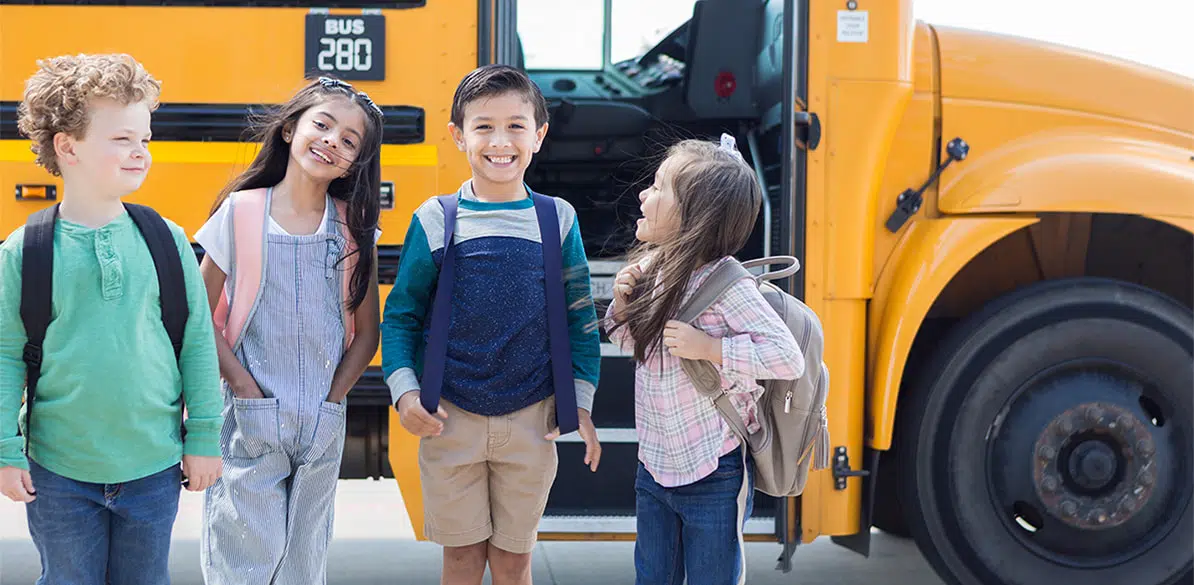Tips and advice for safer school transportation

This is a logistical relief for many parents who, because of their work, cannot do the school run themselves, but many of these journeys are done on conventional roads which pose a higher risk of accident, which can be a matter of concern.
Are your children traveling in the safest possible conditions?
Almost certainly the answer to this unsettling question is yes, because Royal Decree 443/2001 of 27 April sets out a series of standards to guarantee the safe transportation of schoolchildren:
- Vehicles must be less than 16 years old at the beginning of the school year during which they will be providing a service.
- Every bus must have the appropriate School Bus signage at both the front and back of the vehicle.
- The bus’s documentation must show that it has passed an annual vehicle inspection , provided that the vehicle is less than five years old. If the vehicle is older, it must be inspected every six months. It must also have compulsory insurance plus additional insurance to cover civil liability for damages and special authorization to operate as a school bus.
- It is essential that the bus has seats for disabled passengers.
- The floor of the vehicle must be non-slip and the edges of steps must be identified with a bright color so they can be seen easily.
- The doors must make it easy to get in and out of the bus and there must be handrails for further assistance.
- The seats in front of stairwells or those that are not protected by the seatback in front must have some form of fixed protection. If these seats are occupied by children aged 5-11, the seat belts must have three anchoring points and booster cushions must be provided.
- The duration of the journey each way may not exceed one hour.
All these features and systems can be demanded by the parents and guardians of children who go to school by bus.
Since 2007, seat belts have been mandatory on all buses
A child who does not use any form of restraint system runs five times the risk of suffering fatal injuries than one who does.
Studies show that nine out of every ten serious or fatal childhood injuries could have been prevented using this type of safety device.
For this reason, an EU Directive has ruled that all new buses must be fitted with seat belts.
Safety is also in education
Parents, teachers and schools can also do their bit to improve safety on school bus trips.
Let’s go over a few essential behavioral guidelines that need to be instilled in children’s minds.
- Getting on and off the bus. These moments are crucial and if the right habits are not followed the safety of children can be endangered. It is essential to get to the bus stop in plenty of time; don’t wait for your child on the other side of the road, and don’t double park.
- Inside the bus. Ideally, each child should stay in their seat, respecting the space of the others. This avoids many unexpected situations that might otherwise have unfortunate outcomes. No shouting and no rough-housing is very important advice for children, as well as not inciting other children to do so, so the driver can do his job properly without any disturbances.
- It is also very important that they do not carry loose objects in their hands. Everything should be tucked securely inside their backpack so nothing falls inside and, most importantly, outside the bus.
- Evacuation drills. It is often said that children are sponges for their ease in soaking up new information at a very young age. Consequently they should be able to easily familiarize themselves with their surroundings and know how to behave properly in any given situation.
- The Safety Officer. Schools should highlight the importance of the Safety Officer, a teacher charged with supervising children’s arrival and departure at school.
The safety of a child is paramount and on school transportation, it is no exception. If you have any questions at all on this subject, the experts in our Frequently Asked Questions section will help you to resolve them.
